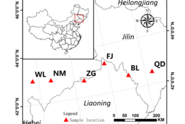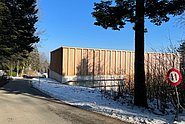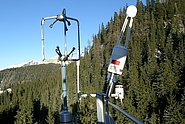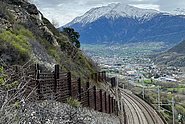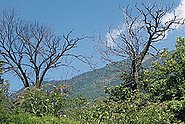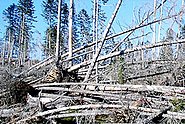Forest dieback in Europe has recently intensified and has become more extensive. This dieback is strongly influenced by meteorological variations of temperature, T2m, and precipitation, P, and can be monitored with forest greenness. This study quantitatively investigates the 3-year meteorological history preceding events of reduced forest greenness in Europe's temperate and Mediterranean biome with a systematic approach. A specific focus lies in the timing of unusually persistent and unusually strong anomalies of T2m and P, as well as their relation to synoptic weather systems. A pragmatic approach based on remote sensing observations of the normalized difference vegetation index (NDVI) serves to identify low-forest-NDVI events at the 50 km scale in Europe in June to August 2002–2022. We quantify the impact of the hottest summer on record in Europe in 2022, which, according to our criteria, negatively affected 37 % of temperate and Mediterranean forest regions, and thereby reduced forest greenness more extensively than any other summer in 2002-2022.
The low-NDVI events occurred in particularly dry and hot summers, but their meteorological histories also featured significant anomalies further in the past, with clear differences between the temperate and Mediterranean biome. A key feature is the anomalous accumulation of dry periods (i.e., periods with a P deficit) over the preceding 26 and 34 months in the temperate and Mediterranean biome, respectively. In the temperate biome only, T2m was anomalously persistent during almost the same 26-month period and featured distinctive peaks late in the past three growing seasons. While anomalously strong hot–dry conditions were characteristic of temperate low-NDVI events already in the previous summer, we find hardly any other systematic meteorological precursor in the Mediterranean prior to the event year. The identified dry periods went along with reduced cyclone activity in the Mediterranean and positive anticyclone frequency in the temperate biome. The occurrence of these two weather systems is locally more nuanced, showing, e.g., consistently increased and decreased cyclone frequency over western and northern Europe, respectively, in all event summers. Finally, the systematic meteorological histories are useful to test whether locally observed meteorological impacts, e.g., structural overshoot, systematically influenced the investigated events. In summary, systematic investigations of the multi-annual meteorological history provided clear evidence of how surface weather and synoptic-scale weather systems over up to 3 years can negatively impact European forest greenness. The observation of the record-extensive low-NDVI event in the summer of 2022 underlines that understanding the forest–meteorology interaction is of particular relevance for forest dieback in a changing climate.
See DOISee Institutional Repository DORA


